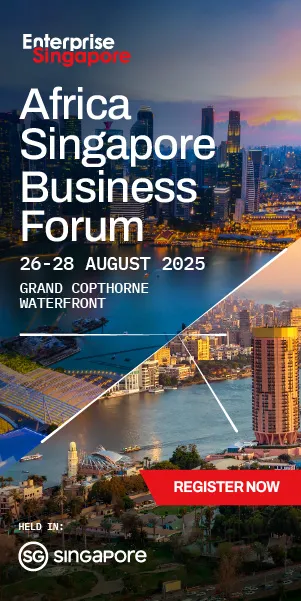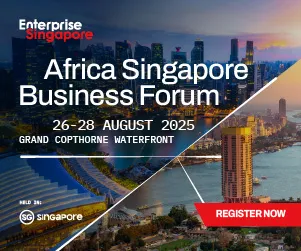Rentia van Tonder has been the driving force behind Standard Bank’s strategy to become the most active funder of power projects in Africa.
Since joining the company five years ago, Rentia van Tonder has been the driving force behind Standard Bank’s strategy to become the most active funder of power projects in Africa.
Heading up its power sector, she leads the bank’s ambitious agenda of innovation as the continent looks to secure funding solutions for an ever-evolving range of projects – some of which incorporate innovative techniques that are taking it into uncharted territory.
Van Tonder believes that sponsors, developers, banks and development finance institutions (DFIs) must challenge the old ways of doing things and find innovative new partnerships if they are to succeed in African markets. Standard Bank launched its new strategy in the power sector two years ago.
“We realised that if you continue to focus solely on the old-fashioned, centralised utility model, you may get stuck with projects that are difficult to develop and bring to a close,” said van Tonder.
“So we built a strategy based around a more diversified power sector model, enabling growth in two key areas: centralised and decentralised markets.”
Decentralised power is typically made up of more holistic power supply solutions, which include off-grid, captive-power opportunities. This is an area where new funding possibilities are emerging, such as solar power firms that supply captive-power solutions to a range of companies, mainly more industrialised and mining resource players.
“We have been diversifying our portfolio and, at the same time, seeing how we can unlock ‘normal’ power projects, as well as corporate lending,” said van Tonder.
Standard Bank has an extensive presence across Africa, with a footprint in 20 countries, which gives it a strong platform from which to unlock some of the opportunities in the power sector that extend well beyond its South African base.
Renewables is an area where there are sizeable financing opportunities. “We’ve learned over the past few years that renewable project sponsors and developers – for renewable independent power projects (IPPs) in particular – are looking for a clearly defined, enabling environment,” said van Tonder.
“These projects are successful if they are clearly defined through a policy environment that make it easier for governments to partner with the private sector, and where all partners clearly understand the requirements.”
Speeding up
Change is coming, though progress can be slow. The problem is not necessarily a lack of funding per se; many countries lack a suitable implementation framework, making it difficult to fast track projects.
Renewable energy is one area where more flexible finance solutions are
being introduced. Historically, the focus has been on large, baseload power projects built around hydro and coal, and sometimes natural gas.
These have served as the key pillars for generation capacity in most countries, but the introduction of renewable energy, and even decentralised and grid integration across the region, means that an increasing number of countries are looking for flexible solutions to ensure that renewable energy projects are properly funded.
Zambia is a case in point. “A few years ago, there was a drought that impacted the country in the form of reduced hydro-generation. That pushed it to think differently about new technologies and led to the introduction of scaling solar and the country’s GET FiT programme,” said van Tonder.
GET FiT is a partnership between Zambia’s Department of Energy and German development bank KfW. Their purpose is to facilitate private- sector investment in small- and medium-scale renewable IPPs.
In April, Zambia awarded a total of 120MW of solar projects to three different consortia at prices as low as $0.039/kWh in a tender that forms the first phase of the government’s REFiT programme.
“I strongly believe that countries such as Zambia are becoming more open-minded when it comes to flexible financing solutions,” said van Tonder. “If you introduce decentralised energy, then you get different approaches where it is possible to be more open-minded about flexibility linked to remuneration. It has the benefit of making countries more
efficient, too.”
Role for DFIs
However, not all renewables projects in Africa can be funded through commercial debt provided by banks, which means there is still a key role for DFIs to play as part of the wider funding mix.
“If progress is slow in tapping commercial bank lending it’s not because of a lack of appetite, it’s because it can be complicated to structure something that makes sense for commercial banks, especially in an environment where DFIs have the appetite to fund them as these projects are aligned with their development goals,” said van Tonder.
She said that Standard Bank can also play an agency role, using its pan-continent presence to provide local funding facilities.
But what of other finance innovations in the energy space? One that has gained some traction is the use of inflation-linked debt for renewables projects.
The success of these will largely depend on the power purchase agreement (PPA) and the tariff structure, and South Africa may be setting the standard here.
“The reason why it became quite popular in South Africa was that our PPA allowed the tariff to be fully indexed, based on the fact that the tariff increases annually by the Consumer Price Index (CPI) rate. Given that the revenue stream is linked to the CPI, this allows a funding instrument to be linked to the CPI,” said van Tonder.
The benefit of this is that it lowers the cost of hedging on long-term projects, in order to give them the minimum internal rate of return and still be competitive on the tariff.
Such products may not always be the best solution for every project or sponsor as it can be difficult to restructure, or be restricted in terms of refinancing, said van Tonder.
“We’ve done some, but these are not 100% CPI funded – it’s usually a combination. And it’s very sponsor specific, depending on what their ambitions and objectives are. It’s not necessarily the ideal solution, but it does give some flexibility.”
Institutional investors
Pulling in pension funds and other institutional providers is a long-
term ambition for African power sector sponsors.
“At Standard Bank, we’ve always been very open to ‘crowding in’ institutional funders and lenders right from the start of a project, whereas other banks may prefer to look at that later in the process,” said van Tonder.
“We’ve been quite clear, especially in South Africa, on the need to develop a secondary debt market by selling down to institutional funders.”
This method has worked well for Standard Bank, she said, helping it to diversify its portfolio.
But widening the pool by introducing institutional investors is not always easy in other parts of Africa, even though Standard Bank has looked at opportunities to work with pension funds in countries such as Namibia and Kenya.
The education process may be a long one, said van Tonder. “When we talk about long-term funding in South Africa, typically it’s 17 years rather than the seven- or eight-year terms that some local pension funds are used to in other countries. In South Africa, that market is well developed, but less so across the rest of Africa.”
Ultimately, van Tonder believes that financiers who are considering investing in Africa’s energy market should be clear-eyed about the challenges they face.
“There are real challenges around payment risk and sovereign risk on IPPs,” she said.
“I’m not always a keen supporter of putting a bandage on a deal from the start. We can get innovative on structuring but if the underlying is still questionable, it remains an issue.”
Furthermore, banks may be disinclined to back projects when faced with tariffs that are much higher than those charged by a utility, resulting in pressure on the utility to achieve cost-reflective tariffs.
“We have become more sensitive around a project’s competitiveness relative to cost-reflective tariffs,” said van Tonder.
“One needs to be quite responsible when we have those types of conversations with sponsors in funding new projects.”
Want to continue reading? Subscribe today.
You've read all your free articles for this month! Subscribe now to enjoy full access to our content.
Digital Monthly
£8.00 / month
Receive full unlimited access to our articles, opinions, podcasts and more.
Digital Yearly
£70.00 / year
Our best value offer - save £26 and gain access to all of our digital content for an entire year!

 Sign in with Google
Sign in with Google 





